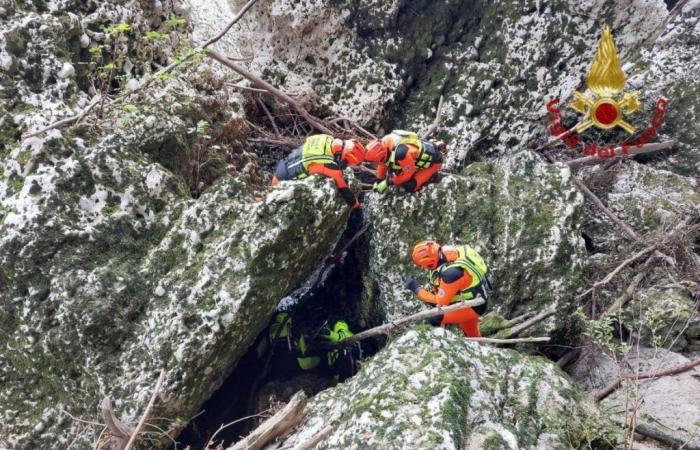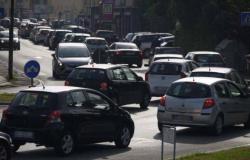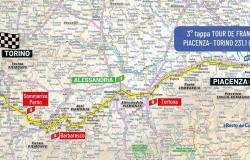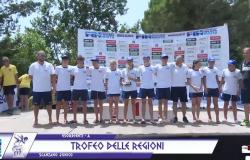Every hour around the world, 40 people die from drowning, and 90% of deaths from this cause occur in low-income countries, where few know how to swim and there is a lack of life-saving services. This had pushed the World Health Organization (WHO), in 2014, to recall the countries, including Italy, which had not yet drawn up and implemented a plan for the prevention of drownings, both for those which occur at sea , and those in internal waters (rivers, lakes and canals).
Following this, in 2019, the observatory for the development of a national strategy for the prevention of drownings and accidents in bathing waters was established at the Ministry of Health, which in 2023 produced a report focused mainly on marine coastal environments, and which is now deepening its work on inland waters.
THE TRAGEDY in which three Romanian friends died, snatched from the current of the Natisone River while they were on an islet – the last body was found three weeks after his disappearance – relaunches the urgency of concrete action to reduce the number of people who drown. Of the approximately 400 cases that are recorded on average each year in Italy, more than half occur during recreational activities, primarily bathing: 150 in the sea, 79 in lakes, rivers and canals and 35 in swimming pools. Obviously, this does not address the much more dramatic problem of those who drown while trying to reach our country.
But to express the dimension and complexity of the phenomenon, we should also consider all the disabilities produced by near-drowning and by traumas reported in aquatic accidents which can lead to serious and permanent disability, such as quadriplegia, with enormous emotional, social and economic costs. . The difficult availability of information, and in particular on the real causes of deaths, makes the picture not well defined, but the most reliable data, which also identify the context in which the accident occurred, and therefore its causes, are those collected and processed by Giorgio Pezzini and included in the report. These derive from press sources read with the eye of someone who has been dealing with this problem for fifty years, first as a lifeguard, then as coordinator of collective lifesaving plans and responsible for the technical direction of the national lifesaving company.
THE REPORT of the Higher Institute of Health, which was produced by an interdisciplinary working group, will form the basis of the desired prevention plan, so much so that the members of the working group were called by the ministry to collaborate in its drafting. The experience accumulated over the years by professional lifeguards, emergency doctors, the world of research and port authorities has allowed the rapid drafting of the report which contains much of what was requested by the WHO. On the contrary, for inland waters there is still a lot of work to be done, since the regions, competent in the matter, have done very little other than install some signs prohibiting bathing, a restriction which would in any case concern almost all Italian waterways. It is not certain that the existence of the plan would have saved the three boys in Natisone, but its application will certainly allow for better risk management.
Remaining on the rivers, the 79 drownings per year are not equally distributed among the regions of Italy, but there is a strong concentration in the northern ones, with the sad record of Lombardy, with 39 deaths per year, followed by Veneto with 11 and from Piedmont with 8. The greater presence of rivers, lakes and canals partly explains these data, but it is also the distance from the sea that pushes those who cannot afford a long journey to reach a beach to throw themselves into the nearest waters to find refreshment on summer days: and from this you can already guess who is dying in the rivers.
There are cases of amateur fishermen, who among other things often enter the water with boots and clothes that are certainly not designed for swimming; others of motorists attempting to cross a stream not thinking that cars, even if they are made of metal, float in the water. But the real bathers in rivers and canals are generally young people, who often choose these waters because they are close to home and with free access, even if prohibited. This leads to the surprising data revealed by Pezzini: 64% of those who drowned in rivers, 54% in lakes and 46% in canals are made up of immigrants, including second generation ones. And if we consider that immigrants in Italy, despite what some say, constitute a minority (around 10% including the unregistered), the risk to which they are exposed is decidedly high. Pezzini writes in the report that many are African (from the equatorial belt or North Africans), but also Indian, Chinese, Ecuadorian or Eastern European (especially Romanians) and the recent event confirms this. He adds that they generally come from continental areas far from the sea and, unlike Italians, they have the habit of bathing in waterways, artificial basins, quarries, ponds and canals. Italians have lost this habit (still flourishing in the 1960s) and only in recent years are they recovering some banks which lend themselves in some way to acting as a substitute for sea beaches.
89% of immigrants who drown do not know how to swim, while this percentage drops to 7% for Italians, who die mainly from illnesses or water accidents. Global warming will make our summers increasingly muggy, and more and more people will arrive in Italy from countries where swimming is not a widespread skill. The plan for the reduction of drownings is not only imposed on us by the WHO, but also, while wanting to forget the no longer fashionable human solidarity, a simple and selfish consideration of the exorbitant health and welfare costs of drownings, near-drownings and all other accidents that occur while bathing.






